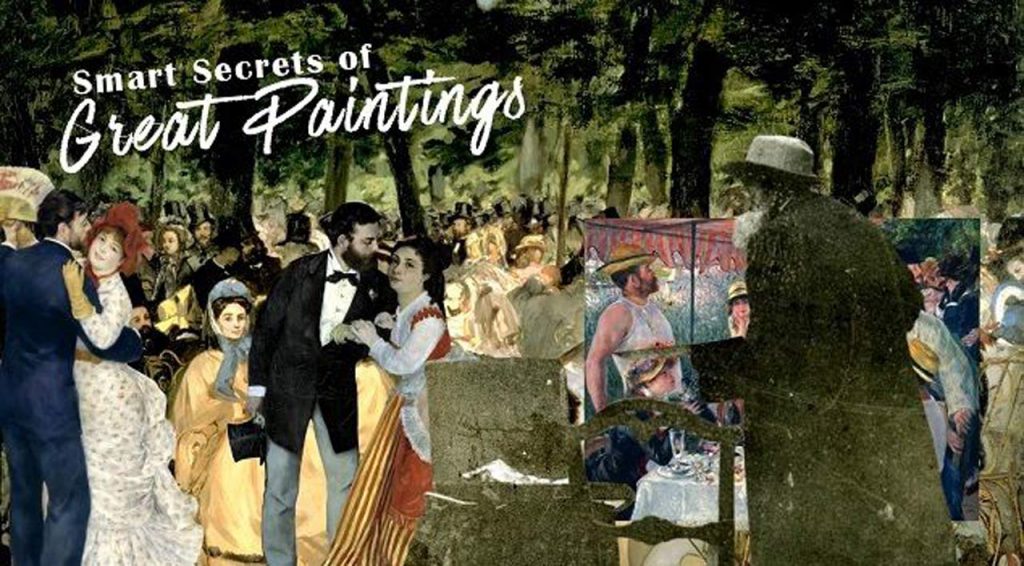Smart Secrets of Great Paintings episode 1 – Gustave Courbet: Paris shone brightly in the second half of the 19th century, with its fashionable restaurants, and its cabarets and theatres, which provided the spectacle of a carefree society. The industrial revolution produced wealth, and fortunes were amassed and lost. Gustave Courbet’s work is politically involved and provocative. It reveals his support for revolutionary movements, and condemns Napoleon III’s authoritarian regime. In addition to its critical dimension, the canvas has an air of mystery, and depicts contradictions.
This series explores history of art in a totally new way. The painting comes to life, as animation overrides the limits of the frame, taking us to the heart of the canvass and plunging us into its era and history. This series of 10 half-hour programs shows how a painted image echos the spirit of its time and relates to a particular historic event. It reveals the poetic, sociological and political potential of the picture by penetrating inside the painting and examine the underlining details, thanks to work of computer graphics which livens up characters, objects and sets.
Each film tells a fascinating story of a creator and the painting process. The great works of the past portray abundant testimonies, and are imbued with secrets and are teeming with mysteries. Beneath the surface of the painting, details awaken, to recount the spirit of the times and the vagaries of History, such as wars, revolutions, economic transformation, scientific discovery, beliefs and schools of thought.
Smart Secrets of Great Paintings episode 1 – Gustave Courbet
Jean Désiré Gustave Courbet was a French painter who led the Realism movement in 19th-century French painting. Committed to painting only what he could see, he rejected academic convention and the Romanticism of the previous generation of visual artists. His independence set an example that was important to later artists, such as the Impressionists and the Cubists. Courbet occupies an important place in 19th-century French painting as an innovator and as an artist willing to make bold social statements through his work.
Courbet’s paintings of the late 1840s and early 1850s brought him his first recognition. They challenged convention by depicting unidealized peasants and workers, often on a grand scale traditionally reserved for paintings of religious or historical subjects. Courbet’s subsequent paintings were mostly of a less overtly political character: landscapes, seascapes, hunting scenes, nudes, and still lifes. Courbet, a socialist, was active in the political developments of France. He was imprisoned for six months in 1871 for his involvement with the Paris Commune and lived in exile in Switzerland from 1873 until his death four years later.
Courbet’s work belonged neither to the predominant Romantic nor Neoclassical schools. History painting, which the Paris Salon esteemed as a painter’s highest calling, did not interest him, for he believed that “the artists of one century are basically incapable of reproducing the aspect of a past or future century …” Instead, he maintained that the only possible source for living art is the artist’s own experience. He and Jean-François Millet would find inspiration painting the life of peasants and workers.
Courbet painted figurative compositions, landscapes, seascapes, and still lifes. He courted controversy by addressing social issues in his work, and by painting subjects that were considered vulgar, such as the rural bourgeoisie, peasants, and working conditions of the poor. His work, along with that of Honoré Daumier and Jean-François Millet, became known as Realism. For Courbet realism dealt not with the perfection of line and form, but entailed spontaneous and rough handling of paint, suggesting direct observation by the artist while portraying the irregularities in nature. He depicted the harshness of life, and in doing so challenged contemporary academic ideas of art. One of the distinctive features of Courbet’s Realism was his lifelong attachment to his native province, the Franche-Comté, and of his birthplace, Ornans.




